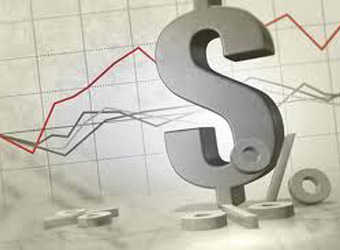Dollar prices inched higher on Monday, but remained close to six-month lows against a basket of currencies as investors assessed the impact of the latest bout of U.S. political turmoil and a resurgent euro.
The dollar index, which tracks the greenback against a basket of six major rivals, steadied 0.2 percent from Friday’s late U.S. levels to 97.292.
But it was hovering not far from the previous session’s low of 97.080, which was its deepest trough since November 9.
U.S. President Donald Trump, now on a trip to the Middle East, left behind political drama in Washington that some fear could derail his administration’s promises of tax reform and financial stimulus, if not his presidency.
Those fears threaten to offset much of the dollar-positive sentiment generated by expectations for a U.S interest rate rise next month. Trump’s budget proposal, set to be unveiled on Tuesday, will include cuts to Medicaid and propose changes to other assistance programs for low-income citizens, the Washington Post reported on Sunday.
Trump’s budget proposal, set to be unveiled on Tuesday, will include cuts to Medicaid and propose changes to other assistance programs for low-income citizens, the Washington Post reported on Sunday.
Uproar over Trump’s recent firing of FBI Director James Comey, who was overseeing an investigation into possible links between the president’s election campaign team and Russia, has pressured the dollar. A current White House official is a significant person of interest in investigation, the Washington Post said on Friday, citing people familiar with the matter.
That news sent Treasury yields lower on Friday, sapping the dollar’s appeal, though they took back some ground on Monday.
The benchmark ten-year U.S. Treasury yield stood at 2.253 percent in Asian trading, above its U.S. close on Friday of 2.245 percent.
The second reading of first-quarter U.S. gross domestic product will be released on Friday and is expected to be revised up from a preliminary estimate of annual growth of 0.7 percent. That would be the weakest growth in three years, though many economists think it will just prove to be a blip.
Futures traders are pricing in about a 3 in 4 chance of a June rate hike, but only about a 40 percent chance of two or more rate hikes in 2017, according to the CME Group’s FedWatch Tool.
St. Louis Fed President James Bullard said on Friday that the U.S. central bank’s expected plans for rate increases may be too fast for an economy that has shown recent signs of weakness.
Several Fed policymakers are due to speak this week, and the central bank on Wednesday will publish minutes of its May meeting, which preceded the most recent political developments.
“We’re still keeping our expectation of a June hike, but the impact of expectations of higher rates on forex could be limited because of the political moves,” said Harumi Taguchi, principal economist at IHS Markit in Tokyo.
“And in the meantime, Europe is emerging as a bright spot in the global economy,” she said.
The euro slipped 0.2 percent to $1.1189 after rising to a six-month high of $1.1212 on Friday.
Against the yen, the euro added 0.2 percent to 124.87. Net long positioning on the euro rose to its highest in more than three years in the week ended May 16, according to calculations by Reuters and Commodity Futures Trading Commission data released on Friday.
Recent economic improvement in the euro zone have raised market expectations the European Central Bank will tone down its dovish language at its next Governing Council meeting next month.
Asian investors continued to monitor the situation on the Korean peninsula, after North Korea fired a ballistic missile into waters off its east coast on Sunday, its second missile test in a week. South Korea said the launch dashed hopes for Seoul’s new liberal government’s aim for peace between the neighbors.
Pyongyang said on Monday it has successfully tested an intermediate-range ballistic missile, indicating further advances in the ability to hit U.S. targets.
Against its perceived safe-haven Japanese counterpart, the dollar added 0.2 percent to 111.53 yen, though the latest developments in North Korea did not give the yen much of a lift.
“If there’s some escalation of the situation, we would likely see the yen rise,” said Ayako Sera, senior market economist at Sumitomo Mitsui Trust.
“But the main story for the markets is dollar weakness due to the U.S. political situation, and also the recent strength of the euro,” she said.
Source: Reuters
